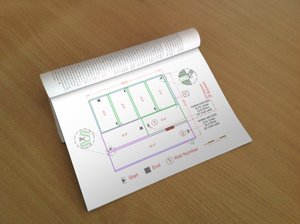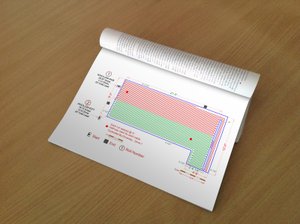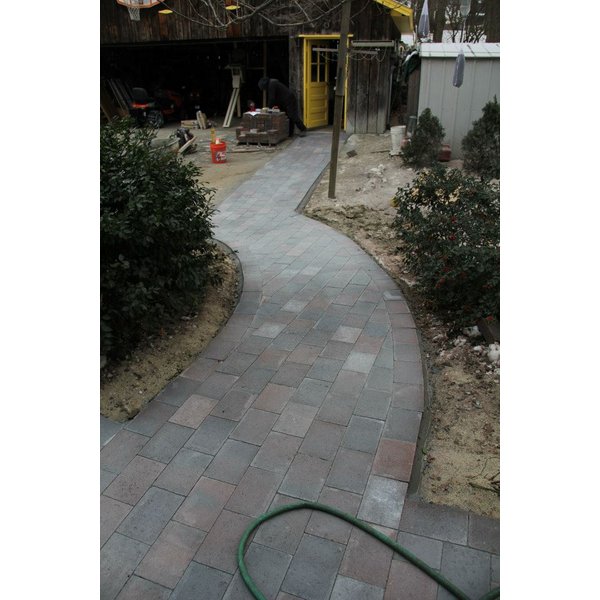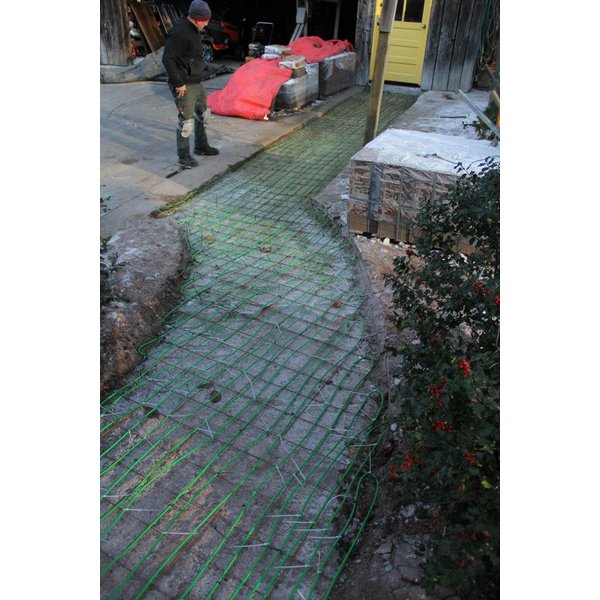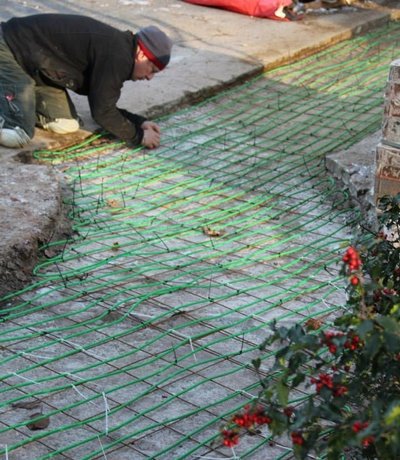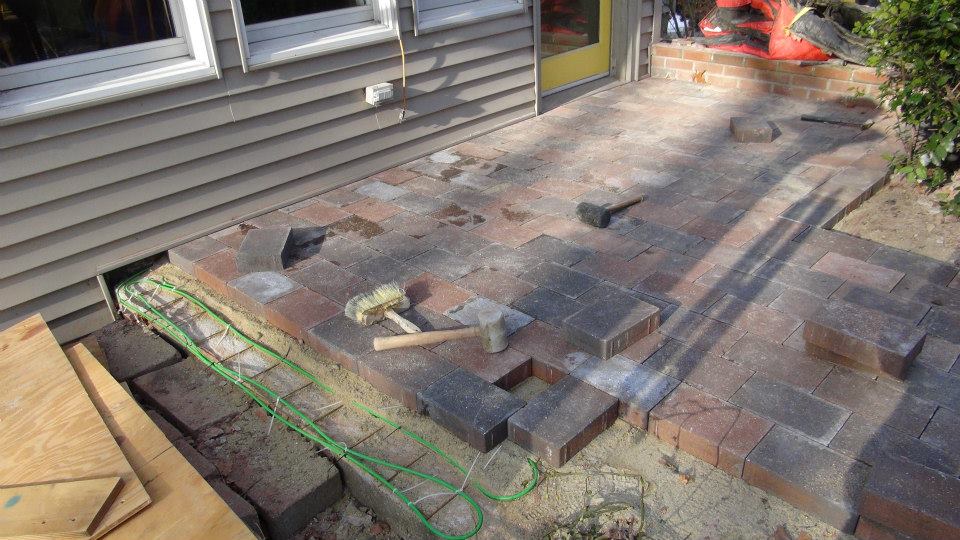Heated Walkway & Path Frequently Asked Questions
How quickly do these systems melt the snow?
That depends on a number of variables (like the temperature outside) but generally speaking these snow melting systems are designed to melt 1" - 3" of snow per hour. Anything above 3" per hour is typically considered blizzard conditions.
Is it okay to cut the snow melting cable if it is too long for the application for which it was designed?
How does the electric snow melting system compare to hot water tubing (hydronic) systems?
The material costs are similar. However, electric systems are easier to install, with fewer components and significantly lower maintenance costs. Electric systems will run for a shorter period of time to give the same level of performance but with much higher energy efficiency (typically 95%-98% efficient). Controls and sensors required for the two types of systems are very similar. Electric systems do not usually require slab insulation and do not create the concerns typically associated with hydronic systems. These concerns include, but are not limited to, return temperatures, flue gas venting, waterway shrinkage and property damage caused by leaking pipes or tubes.
May I cross or overlap the WarmlyYours snow melt heating cable?
When installing outdoor WarmlyYours snow melting cables for your driveway, patio, walkway, terrace, stairs, ramp, etc. - NEVER cross, overlap, or allow the heating cables to touch each other. Doing so will quickly cause a circuit failure due to excessive heat build up. Always follow the installation instructions and/or design layout plan to ensure the cable is installed with the correct spacing required for proper operation.
Does the factory splice need to be completely embedded during installation?
What is the lowest temperature that a snow melt system can handle?
Our systems can handle low temperatures, but many controls come equipped with a Low-Temperature Lockout Feature. This feature prevents the system from running in very low temperatures. At very low temperatures it can become difficult for the system to effectively melt the snow. It is however possible to turn off this feature should you need the system to keep running during such low temperatures.
Why a GFEP (GEFP, RCCB, or heat trace circuit breaker) and not a GFCI breaker for WarmlyYours outdoor deicing and snow melting systems?
This National Electric Code (NEC) required protection for fixed outdoor deicing and snow-melting equipment may be accomplished by using circuit breakers equipped with ground-fault equipment protection (GFEP) of 30 mA. It is important to understand that this required equipment protection is not the same as a 5 mA GFCI used for personal protection.
How much power does the snow melting system use?
Power requirements are measured in Amps and based on three factors: the watts per sq. ft. of the snow melting cable or mat, the area powered and the voltage used for the application. Our product is rated at 50 watts per sq. ft., so that is a constant factor. Most snowmelt projects are powered with 240V AC – not all, but most. The one factor that is always variable is the area to be heated/powered. That is based on your project. For a point of reference, let’s use the example above of a 350 sq. ft. concrete patio.
The formula is (50 W/sq. ft. x area of 350 sq. ft.) / V (240V) = Amps, so 17,500 / 240V = 72.9 Amps
Will the snow refreeze into ice once melted?
All of our automatic controllers have a Hold-on time feature after the initial warming up of the snow melt system. This feature ensures that all the snow is melted from the surface, and also that the system continues to operate and evaporate the surface water without it refreezing.
Can this be used with pavers?
Pavers can be removed and reinstalled for a retrofit application of our snow melt system. Tire tracks are not typically recommended for paver surfaces, so any retrofit application would most likely need to be full coverage. In this case, it should be treated like a brand new installation, just with existing pavers.
How deep should snow melting heating elements be embedded in an outdoor surface like a driveway or walkway?
To ensure optimal performance, snow melting heating elements should be installed so that they are consistently 2"-3" from the finished surface. For installations using pavers, the maximum thickness for pavers installed over heating elements is 2.5".
How much does a snow melting system cost?
The heating elements for a snow melting system typically will start at $9 ($11 CAD) per sq. ft. for Snow Melting Cables and $11 ($14 CAD) per sq. ft. for Snow Melting Mats. However, you'll also want to keep in mind the cost of a control, and if required, sensor/s for your snow melting system, which will add to the cost. Use our free Quote Builder to get an idea of how much a system would cost for your project.
Does it affect life of the existing driveway?
When do I need a relay panel?
What happens if the snow melt cable is damaged during the installation?
If a cable is damaged during installation, recheck the system for continuity and confirm the integrity of the insulation with a megohmmeter, or "megger" tester, referring to the installation and testing instructions. If the cable fails any of these tests, take the following actions: clear a 3 foot square working area around the damaged section of cable, and record the cable part number from the UL tag and the location where you purchased the product. Call WarmlyYours with the above information. WarmlyYours will provide further assistance and supply a splice kit suitable for repairing the particular cable.
What is the wire spacing for snow melt cables?
The most common spacing for snow melting systems is 3“ from wire to wire. However, we can design snow melting systems based on your local climate and weather expectations that might have different cable spacings to ensure the most efficient system possible. We also offer snow melting mats with 3" and 4" spacing.
Where does the aerial sensor get placed?
How much does the snow melting system cost to operate?
To calculate the system's approximate operating costs, multiply the total kilowatts of the system by the cost per kilowatt in your area. Let's use the example of a 350 sq. ft. of concrete patio (residential application), with 240 VAC.
Total Watts: multiply area in sq. ft. x 50 Watts
350 x 50 = 17,500 Total Watts
Kilowatts: (the unit in we purchase electricity) take the Total Watts and divide by 1000
17,500 Total Watts / 1000 = 17.5 Kilowatts.
Kilowatt Rate: use the national average of .12 cents per Kilowatt-hours so how much do we pay for 17.5 kWatts?
17.5 kW x .10 = $1.75 for every full hour of operation.
Hours of Operation: We use a typical 6 hour snowfall for our example.
$1.75 x 6 hours = $10.50 for that snowfall.
All of this will vary due to "after-run time". "After run time" is where the system remains on extra hours after the snow has completed falling, to ensure complete pavement snow melting and drying.
Do you need a thermostat for the Snow Melting system?
The snow melting system is not operated by a thermostat, it is operated by either an automatic or manual controller. A snow melting controller does not maintain temperatures like an indoor thermostat does. An automatic snow melting controller only turns the snow melting system on when it detects precipitation and the temperature outdoors is below the set temp (typically 37.4°F / 3°C).
At what depth do the snow melt cables need to be?
Is this product sufficient to melt the snow in our area? Also, about what will this product cost to use per day?
A properly designed and installed system will handle most snow melting demands. Some snow events may have a very rapid snow fall rate, and some may not. No 2 events are ever exactly the same. Our system typically can melt 1“-2“ of snow per hour, on average. However, it is important to understand that a system may not melt snow at very cold temperatures. This is simply because the system cannot generate enough BTUs to overcome the heat loss generated by very low temperatures.
In order to estimate cost of operation, the Warmly Yours Electric Snow Melting Operating Cost Calculator is a useful tool that can help illustrate what it would cost to operate the system.
How should the Cold Lead be installed for patios/walkways/driveways?
The electrician must route the cold lead(s) through rigid metal conduit(s) or other approved means, to get back to an accessible weatherproof junction box(s). Care must be taken by the electrician so that none of the heated section of Cable enters the conduit(s).
What in addition to the snow melt mat/cable do I need from WarmlyYours for an install?
Once you've decided what type of heating system (manual vs. automatic), you'll need to choose a control, which may or may not utilize a sensor. You may need a relay panel(s) depending on the size of the system, and a snow melt plaque which is required by the National Electric Code. Junction box(es) may be optional depending on the distance of heating cable from the indoor power location.
What is the minimum depth for the layer of noncombustible material needed beneath snow melting heating elements?
What type of conduit should I use to bring power to the heating cables?
Will I need a new / expanded electrical panel for my snow melting system?
Always confirm the power requirements with the electrician. Large snow melting systems usually require a new electrical panel or electrical service. Contact WarmlyYours for a quotation, indicating the actual power capacity available, and to obtain recommendations for reducing the power consumption. For example, opting for tire track coverage rather than installing the snow melting system over the entire driveway can dramatically reduce power requirements.
The neutral on GFEP/GEFP/RCCB 240V breakers is not used, why do I need this then?
A 2 pole single-phase 240V circuit works by continuously monitoring the current flowing through both hot wires of the circuit. If it detects even a slight imbalance between the current on each hot wire (indicating a ground fault), it will quickly trip, cutting off power to the circuit. Essentially, it compares each leg of the 240V circuit and trips if they are not precisely equal.
What is GFEP?
What is the purpose of the Low Temperature Lockout Feature on certain snow melt controllers?
This feature prevents the snow melting system from running, by default, in temperatures below 17°F (–8.33°C), or as set by the user. At temperatures this low, it becomes difficult for the system to effectively melt the snow. It is, however, possible to turn off this feature should the system be required to keep running during these low temperatures.
Why isn't a temperature sensor required for all installations?
Does the mat require a sensor to go with it?
No, a sensor is not required with the snow melt system. However, certain automatic controllers require a temperature/moisture sensor to sense atmospheric conditions and may also require an in-slab, high temperature limit sensor to be installed (notably, asphalt installations).



